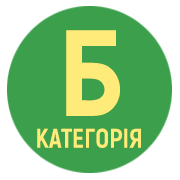THE DIFFERENTIATED IMPACT OF MEANS OF ATHLETIC GYMNASTICS ON THE LEVEL OF PHYSICAL WORKABILITY OF 15–17-YEAR OLD YOUNG MEN
Abstract
The article, based on the conducted theoretical research, highlights the current issues of the process of physical education by means of athletic gymnastics. The results of the experimentally confirmed positive impact of the means of athletic gymnastics on the level of physical workability of young men aged 15–17 are presented. The research highlights the topical problems of the process of physical education of high school boys: increasing of the efficiency, physical activity, individual approach, preservation and promotion of health. The tasks of the work: 1) to develop and test a program of a differentiated approach in teaching 15–17-year-old young men athletic gymnastics; 2) experimentally check the effectiveness of the developed methods on the level of physical health of high school students. To check the effectiveness of the developed methods and the content of physical education a pedagogical experiment was conducted with 15–17-year-old boys from Rivne schools. Mathematically processed results of the experiment showed a probably (Р<0.05) higher level of physical health of high school boys from the experimental groups, which confirms the positive impact of the proposed methods. In physical education of high school young men, we applied the method of dividing them into groups according to the state of physical health, based on which a differentiated approach was implemented concerning the dosage of the volume and intensity of exercises in accordance with individual and group characteristics.
References
2. Безкопильний О.О. Диференційований підхід при початковому навчанні плавання дітей з різними властивостями основних нервових процесів : автореф. дис. на здобуття наук. ступеня канд. наук з фіз. вих. і спорту : 24.00.02. Харків, 2009. 23 с.
3. Навчальна програма з фізичної культури для загальноосвітніх навчальних закладів 10–11 класи (*Рівень стандарту) : наказ МОН України № 451 від 22.03.2017р. / авт. М.В. Тимчик, Є.Ю. Алексєйчук, В.В. Деревянко, В.М. Єрмолова, В.О. Сілкова.
4. Дейніченко Т.І. Диференціація навчання в процесі групової форми його організації (на прикладі предметів природничо-математичного циклу) : автореф. дис. на здобуття наук. ступеня канд. пед. наук : 13.00.09. Харк. нац. пед. ун-т ім. Г.С. Сковороди. Харків, 2006. 21 с.
5. Сітовський А.М. Диференційований підхід у фізичному вихованні підлітків з різними темпами біологічного розвитку (на прикладі школярів 7-х класів) : автореф. дис. на здобуття наук. ступеня канд. наук з фіз. виховання і спорту : 24.00.02. Львів. держ. ун-т фіз. культури. Львів, 2008. 20 с.
6. Гайдук І. Атлетична гімнастика в системі фізичного виховання дітей старшого шкільного віку. Молода спортивна наука України : збірник наукових праць з галузі фізичної культури та спорту. Вип. 10. У 4-х т. Львів : НВФ «Українські технології», 2006. Т. 1. С. 141–144.
7. Глазирін І.Д. Основи диференційного фізичного виховання. Черкаси : Відлуння-Плюс, 2003. 352 с.
8. Корягин В.М. Особенности измерения упруговязких свойств скелетных мышц человека. Педагогіка, психологія та медико-біологічні проблеми фізичного виховання і спорту : збірник наукових праць / за ред. С.С. Єрмакова. Харків : ХХПІ, 2003. № 1. С. 61–65.
9. Олешко В.Г. Силові види спорту : підручник для студентів вузів фізичного виховання і спорту. Київ : Олімпійська література, 1999. 190 с.






